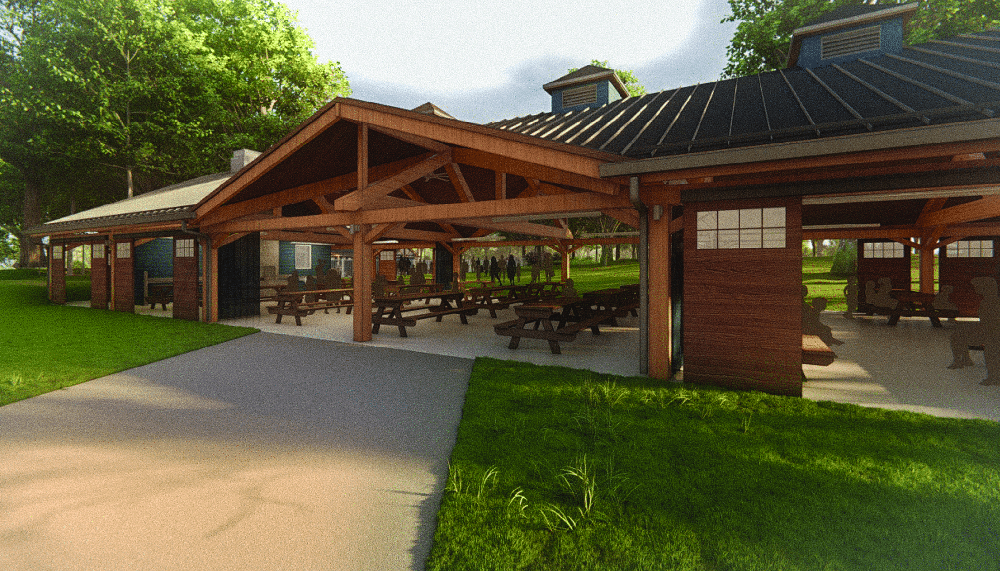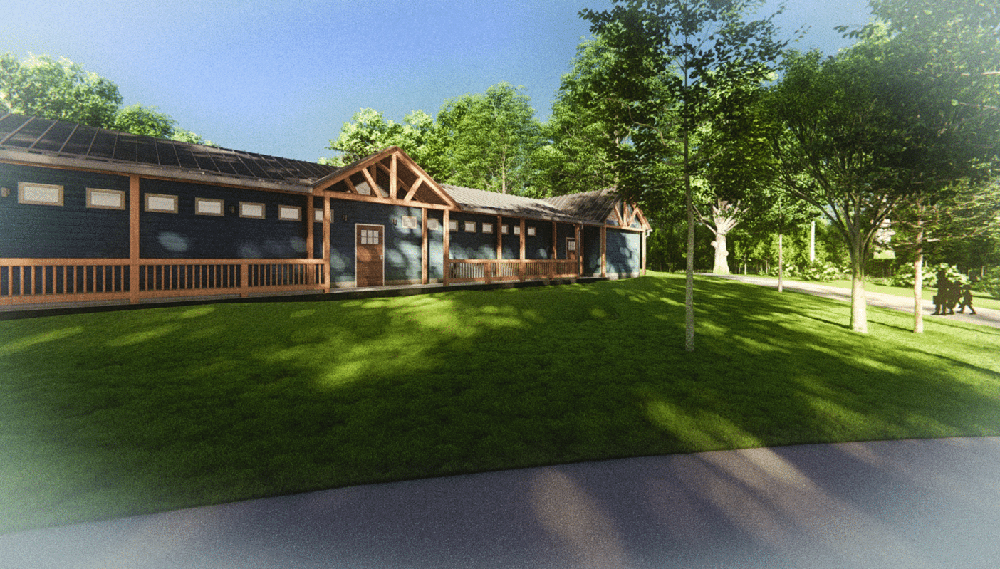
Oxford, CT Founded in 1912, Girl Scouts is an organization steeped in tradition. Whether you were a scout, know someone who was or is now, or simply are familiar with the organization, you have to admire their long history of helping girls grow, thrive, and improve the world around them. When the Girl Scouts organization asked Patriquin Architects to design a new cook shelter and pool house for the Girl Scouts of Connecticut Camp AnSeOx, they knew they also had to respect the way the organization’s facilities reflect its legacy. So, while the structures are very straightforward, finding the right blend of a timeless aesthetic with functionality and Americans with Disabilities Act (ADA) accessibility was anything but simple.
Patriquin Architects never design in a vacuum, so to speak. They always encourage input from the people who will use a structure. So it was with this project. Patriquin Architects initial design steps included community outreach in which they got input from the campers on their visions for the new shelters. These thoughts helped guide our design process.
Aesthetically, there was agreement on maintaining a traditional rustic “camp” feel. To do that, Patriquin drew inspiration from the camp’s existing “stick-built” structures, using exposed wood and natural, warm hues.

The gable roof structures used for both the pool house and cook shelter mimic that of the existing camp structures, in addition to helping shed snow and rain efficiently. The design includes south-facing clerestories (high sections of wall with windows above eye level) on the pool house to allow plenty of natural light into the space—an important request from the campers. This feature reduces the need for artificial light during the day.
While both the cook shelter and pool house reflect the aesthetics of the surrounding camp, material choice was a crucial part of ensuring that both structures were able to withstand the test of time. Patriquin incorporated standing seam roofing and fiber cement siding in their design. They provide a traditional camp aesthetic while requiring little maintenance, in a type of design they refer to as modern vernacular architecture.
Standing seam construction may seem like a departure from traditional architecture, but the clean lines and subtle color allow it to fit well without being contextually out of place. Plus, it can endure the elements and withstand the test of time. Similarly, fiber cement siding provides the appearance of wood while eliminating the possibility of rot and the need for replacement that is inevitable with natural wood siding.
As a central part of the Girl Scouts’ experience, the cook shelter will be used by campers as they learn more about the outdoor cooking experience, specifically cooking over an open fire. In the off-season, the shelter will be available as a place for campers to gather and prepare food.
To enable campers to use the structure throughout the year, they created a design that features sliding barn doors. That way, the shelter can be open and airy in the warmer months and warm and enclosed when the weather turns cold.
The pool house and cook shelter will be the first fully ADA-accessible facilities at Camp AnSeOx and welcome complements to the newly designed ADA-accessible pool. While it’s not uncommon for designs from decades past to unintentionally include physical barriers, the desire to enable enjoyable, shared experiences for campers of all abilities is at the core of our designs and will be for all new construction in the future.
For example, the design of the pool house will provide privacy and ease of access to campers of all abilities as they get ready to use the pool. And the cook shelter features fully accessible cook surfaces and sinks, allowing all campers to learn about cooking and share in the experience of preparing meals.
.png)






